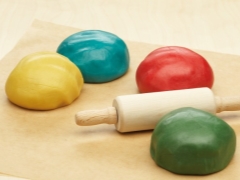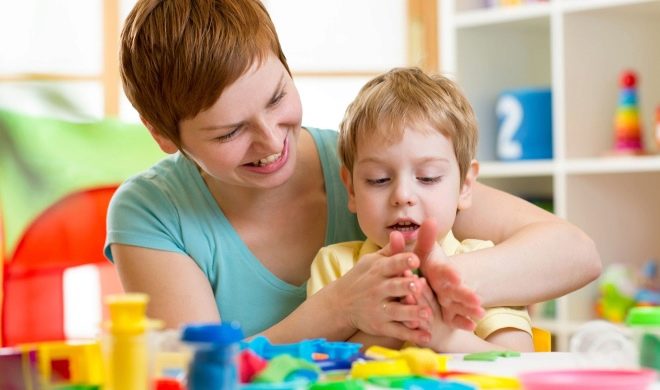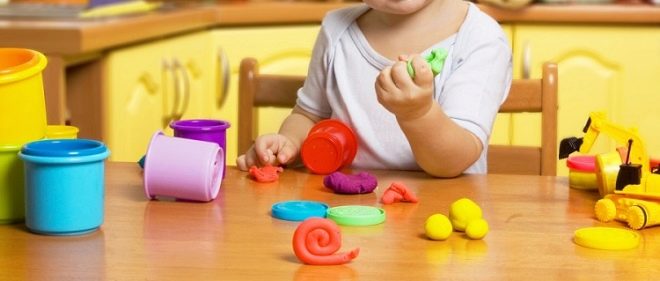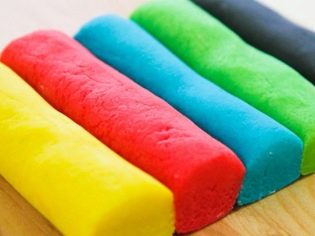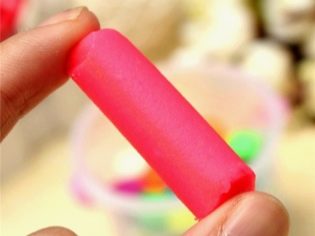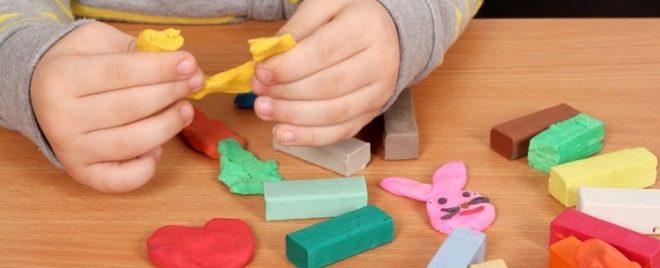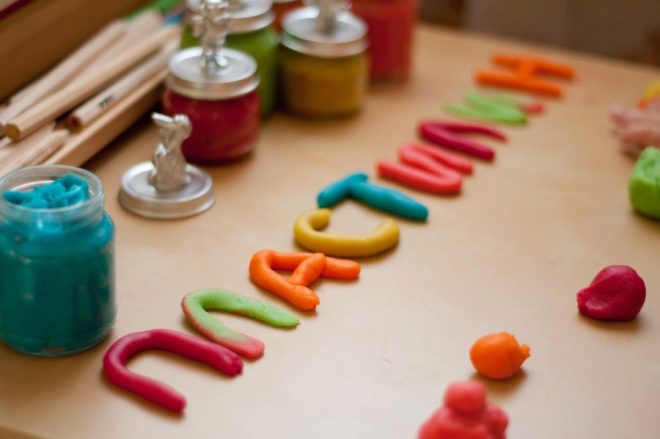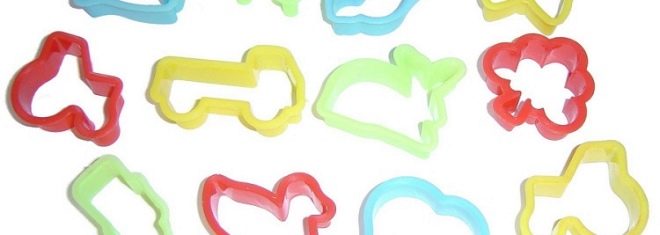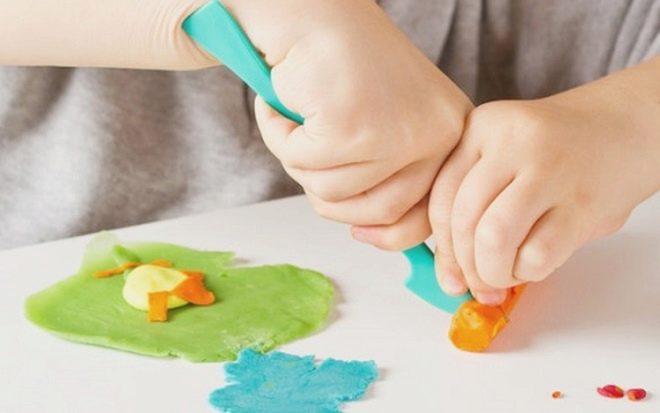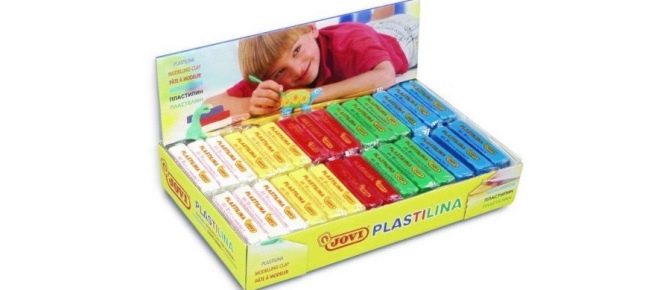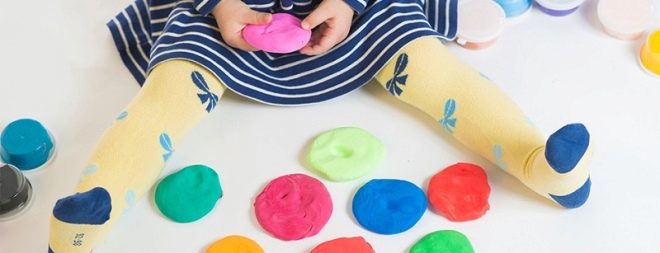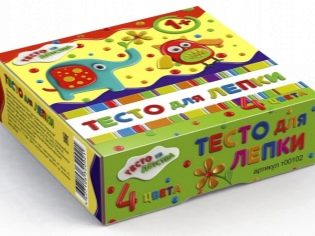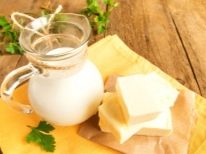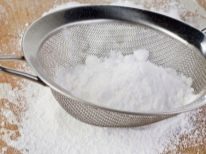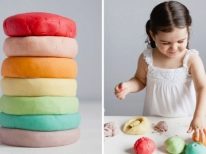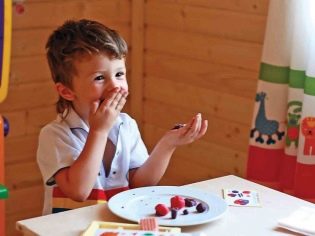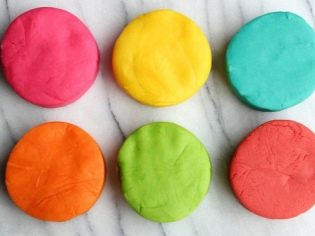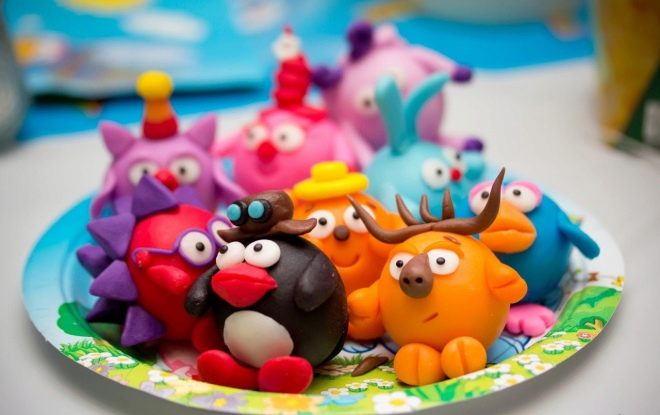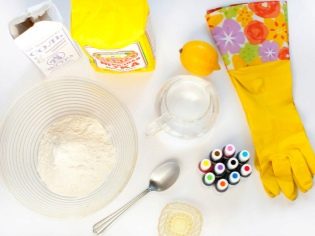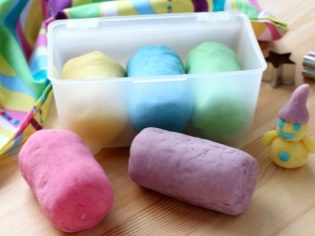"Edible" plasticine
Since the baby at an early age is ready to pull everything into his little mouth, edible clay will help parents solve the problem of “eating” the product for creativity. After all, this is not only the active development of fine motor skills and creativity of the toddler, but also a pleasant pastime.
Special features
Most parents have questions about how old a child can give clay in their hands. The answer is simple: watch your child, and as soon as the baby becomes interested in toys and walks, you can safely give clay.
For a one-year-old child, playing with plasticine should become a daily norm.
For your child’s interest in modeling, you need to teach him this activity in the form of a game, but in no case need to force him to sculpt. To do this, you can try to sit next to him, pick up clay and mold the most simple figure, for example, roll up a sausage. The baby will certainly want to know what it is and take it in hand.
In addition to rolling sausages, you can also use other simple manipulations with clay. For example, even pinching off pieces or kneading it in the palm will be beneficial. You can also try rolling a bun, while decorating it with some elements to make an interesting hack (for example, by adding a leaf with a sprout to it, you will get an apple).
For children from a year it is recommended to use dough or soft clay for modeling. To date, the market has a huge variety of options for soft mass for modeling, and any parent will be able to choose the right copy for their child. Virtually all such products have a unique softness, and when in contact with the air gradually begin to harden. Thus, the finished figure freezes in a few hours. And one more feature of such a mass - if a frozen toy is dropped on the floor, then an odd job, like a ball, will bounce off the floor.
The first crafts of the baby is the story of the formation and knowledge of the world as a child. They can be proud of, put on the shelf with other achievements of the baby. Let everyone know how smart your child is growing up.
Gradually, begin to complicate the tasks for the child: show how you can make more complex things with simple details. And the pieces of plasticine attached to a board or cardboard in the form of a drawing can be the first step of a kid to the art of creating miniature applications.
Among the huge variety of crafts from plasticine, you can choose the most simple, which will not take much time. For example, a child can be shown how to make a snake (roll up the sausage and attach it on each side) or a mushroom (roll up a short sausage and attach a flattened ball to it).
As a result, thanks to plasticine, the child learns the following skills:
- Work with soft and hard materials.
- Imitate your parents.
- Manipulations with various objects.
- Development of memory and attention.
- Creative thinking and activity.
How to organize a lesson?
By following some recommendations, you can properly prepare your child for the process of familiarizing with clay:
- Prepare a workspace for creativity. It will be enough to find a place to study with the child and lay a newspaper or other unnecessary material on the work surface.
- Prepare your baby for the process of modeling. Give him plasticine, you can take the box itself. Let him consider it, smell it, touch it. After all, this is his first acquaintance. He should know what kind of "thing" in his hands.
- Show how to handle a new thing for him.. To do this, take in the hands of clay and do some simple manipulations with it, as described above.
- Show molds for working with sculpting material. Teach your child to use them. Build a figurine with them.
- Tell the kid. Teach him to determine the color of crafts. Consult the choice of color for a specific type of toy (crocodile - green, typewriter - yellow or red).
- Express your admiration for the child his skills. Praise his crafts. Put them in a prominent place, be proud of them.
- Teach your child to wash hands after sculpting and clean up the workplace after yourself.
- The first acquaintance with clay should not take more than 10 minutesgradually the time can be increased.
Manufacturers
In the market of producers of clay, which you can eat, there are several companies that have earned the trust of customers due to their excellent reputation. Consider the most popular products for modeling from these manufacturers:
Set for modeling in the bucket from the brand Jovi. Distinctive features of this product are as follows:
- Does not stick to hands.
- Made from environmentally friendly components (plant-based).
- Easily removed from surfaces.
- Does not dry out.
- Always plastic.
- Bright unusual colors.
- The possibility of mixing the color palette.
- The kit includes: plasticine of 6 colors, stacks (3 pcs.), Forms or patterns (3 pcs.), Oilcloth.
Dough for modeling the brand "Dough from childhood". Domestic manufacturer, not inferior to foreign counterparts. The advantages of this baby product:
- Convenient storage. The material is packed in four plastic jars.
- The mass is soft, does not stick to the handles of the child.
- There is the possibility of mixing colors.
- Natural composition (plastic, salt, flour, natural dyes).
- Mass salty to taste.
- You can use children from 1 year.
How to cook?
Below we look at 2 recipes for making such clay with your own hands.
Recipe number 1
The following ingredients are required to prepare this product:
- ½ cup butter. It should be unsalted and softened.
- Cream in the amount of 1 tablespoon. It is advisable to take thick.
- Powdered sugar. 3-4 glasses will be enough.
- Vanilla extract. It needs quite a bit - just ¼ tsp.
- Gel dye (food grade).
Cooking technology:
- Beat cream and butter with a mixer so that a homogeneous mass is obtained, while sprinkling it with powdered sugar. We strive for the mass to become thick and dense - suitable for modeling.
- Add vanilla extract.
- Knead the dough on the surface and sprinkle with powdered sugar.
- We divide the mass into parts and add to each of them a drop of food coloring.
- Mix well. Remove the excess stickiness of the mass by adding powdered sugar until they disappear.
Done! We got modeling clay.
Some tips:
- To give color to the mass for modeling it is not necessary to use food dyes, they can be replaced by natural ones. For example, beet juice is perfect for dyeing plasticine in red, and carrot juice for dyeing in orange.
- Storage of clay must necessarily occur in a closed container or cling film. After you get it out of the fridge, let it warm for 20-30 minutes at room temperature. During this time, the clay soften and become more pliable.
- When preparing figures for cakes, time is needed for them to dry. Therefore, to prepare a festive paraphernalia should be in advance.
- Before installing the figures on the cake it is advisable to freeze them.
- The stickiness of the mass is adjusted with powdered sugar. After that, the mass must be thoroughly mixed.
Recipe number 2
To make edible clay according to this recipe, we need:
- One glass of water.
- Flour (2-3 glasses).
- Salt in the amount of half a cup.
- Citric acid (1 tsp).
- Vegetable oil (1 tablespoon).
- Food colorings.
To prepare the clay for this recipe follow our instructions:
- In a large container, mix all the ingredients with the exception of flour.
- Add flour in portions: first 2 cups, stir.
- We look at sticking to hands and spreading. If this is the case, then you need to add another half a cup of flour. We perform this procedure until the dough stops sticking to the hands.
- For color, we divide the mass into parts and add to each food dye. Then you need to mix each part until a uniform color.
Clay is ready to use. It should be noted that it should be stored in a cold place and in a closed container.
Some tips:
- For the smallest, we recommend adding 2-2.5 cups of flour in the manufacturing process. Such clay will be different softness and the required plasticity.
- When adding more than 3 cups of flour, the clay becomes not very soft, which complicates the process of making crafts. Perfect for children who are more than 2 years old.
In the next video you will see another simple recipe for edible clay.
